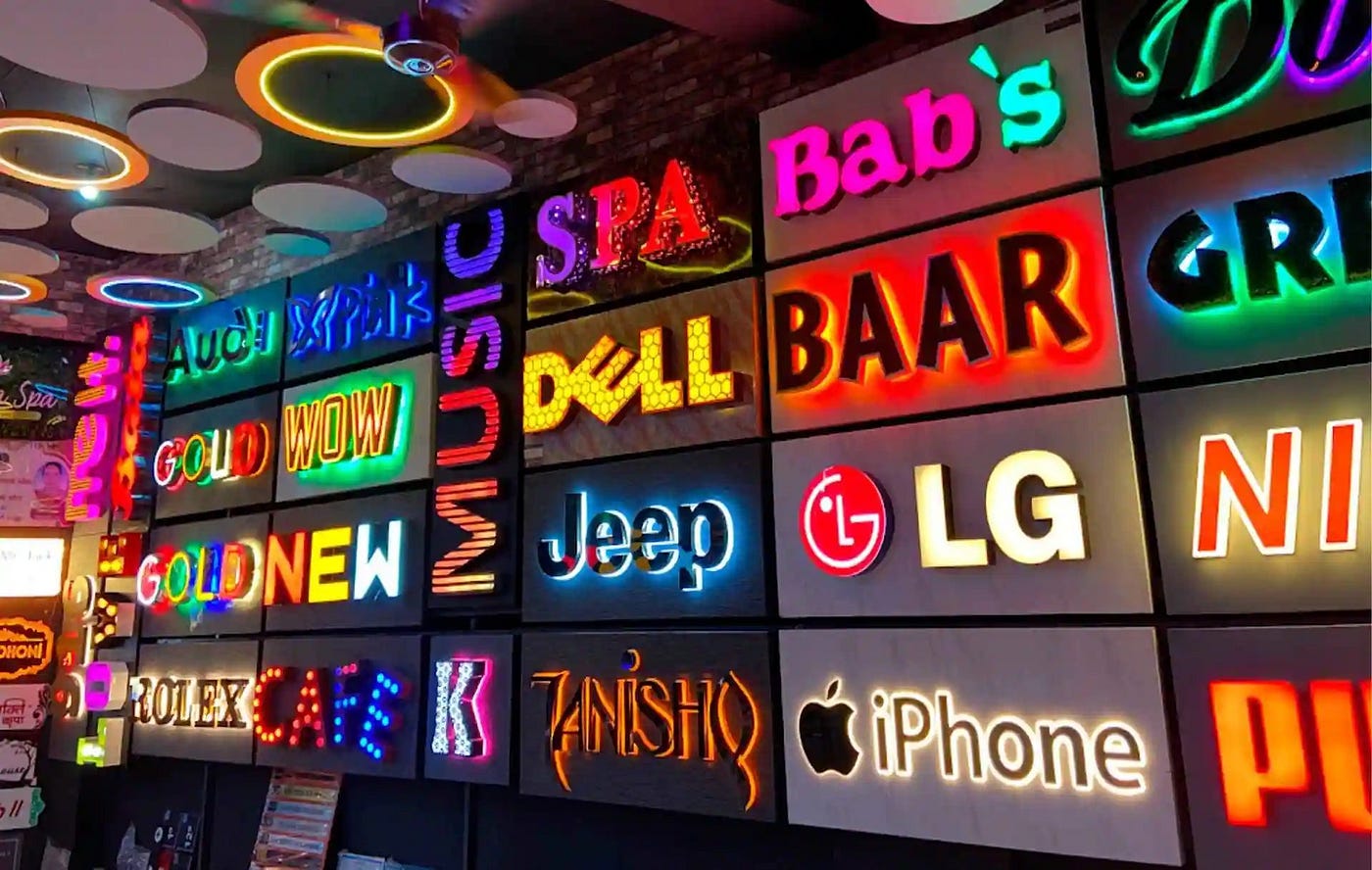What is digital Signage
Digital signage is a digital installation that displays video or multimedia content for informational or advertising purposes. It’s more than just a digital display replacing a traditional static sign. It requires mounting systems, media players, software, services, cabling, and other essentials that optimize the system and keep it functioning at a high level. The content of digital signage can be managed from a central location and adjusted to match the needs of any given audience or time frame.
Digital signage systems are networks of interconnected digital displays that provide targeted information, entertainment, merchandising, and advertising. They use display technologies like LCD, LED, projection, and e-paper to display digital images, video, web pages, weather data, restaurant menus, or text.

Usage and Benefits
Digital signage is used in a variety of settings such as public spaces, transportation systems, museums, stadiums, retail stores, hotels, restaurants, and corporate buildings. It serves multiple purposes including wayfinding, exhibitions, marketing, and outdoor advertising.
One of the key advantages of digital signage over traditional messaging is its ability to engage with the audience in a more effective way. Moving images, visually striking graphics, and the ability to refresh the message instantly make it more captivating. It can also provide real-time information, making real-world places more user-friendly.
Market Growth
The digital signage market has seen significant growth in recent years. This growth is due to the rising popularity of dynamic digital content and the growing demand by companies for the development of digital signage solutions. The market is expected to continue to grow in the coming years, indicating the enormous impact and potential of digital signage.
Content Management
A Content Management System (CMS) for digital signage is a user-friendly dashboard that lets users control their display content. Key features include scheduling when content appears, managing screens from anywhere, supporting various media formats, integrating with other systems, designing custom layouts, and ensuring the content looks good on any device. Some digital signage software is hosted on the cloud, allowing users to access their dashboard or CMS from anywhere in the world.
In conclusion, digital signage is a powerful tool for businesses and organizations to deliver dynamic and engaging content to their audience. It’s a rapidly growing field with a wide range of applications and benefits.
LED (Light Emitting Diode) signage is a popular choice for businesses due to its energy efficiency, versatility, and visual appeal. LED signs are available in both indoor and outdoor versions, each designed to suit specific needs and environments. They can be customized to display high-definition graphics, full-motion videos, animations, and text communications, making them an effective tool for attracting attention and communicating with consumers.
Types of LED Signages
1. Backlit Signs: These signs have an internal light source, usually a fluorescent lamp or LED lights, that illuminates the sign from the back. This type of signage is commonly used in theatres, where they bring classic movie posters to life, creating a captivating visual spectacle. Backlit signs can also be seen in the form of light boxes or cabinet sign boxes, which have a simple design structure with inside illumination.

2. LED Strip Lights: These are perfect for any installation, where they can be aligned or configured in various ways to deliver brightness to infinite shapes of outdoor and indoor signages. The LED strip lights come with adhesive backing and are flexible enough to take the shape of various curves and angles where you want to install them.

3. Spotlight LED Signage: This involves a source of light positioned externally above or below an otherwise unlit sign. Businesses sometimes choose to illuminate signage with spotlight effects such as wall washing and wall grazing. LED modules can be used as wall grazers where the lights are positioned close to a wall or sign at a dramatic, tight angle that highlights the texture of a sign, or they can be used as wall washers where the lights are placed further away and at a wider angle to create an even spread of light across the display face.

4. Neon LED Signage: Modern LED modules marry the classic look of neon with the flexibility, durability, and cost efficiency of today’s technology. Traditionally, neon signs were glass tubes filled with neon gas that gleamed with a static color. Now, LED technology allows for the same visual appeal with more versatility.

5. Full-color LED Signs: These signs are great for both indoor and outdoor usage. They allow you to customize the high-definition display as often as you’d like. You can choose from photo-realistic graphics, full-motion video, animations, text communications, or a combination of any of these to increase your reach.

Factors to Consider
When choosing LED signage for your business, it’s important to consider the size, location, and content you want to display. The size should be determined by its location, and the type of signage you need depends on the content you want to show. LED sign boards offer flexibility, allowing you to display promotions without having to print materials that you won’t need in the near future. Videos, texts, images, and animation can all be shown on your signage.
Conclusion
LED signages play a crucial role in conveying messages, promoting businesses, and enhancing visibility. With the various types available, businesses can choose the one that best suits their needs and objectives. Whether it’s a backlit sign, LED strip light, spotlight LED signage, neon LED signage, or a full-color LED sign, each type offers unique benefits and aesthetic appeal.
Benefits of Using LED Signage for Business
LED signage offers a variety of benefits for businesses, making it a smart investment for marketing and branding efforts.

1. Enhanced Visibility and Attraction LED signs are known for their vibrant brightness and visibility, which can help businesses stand out from competitors. The unique segmented composition of LEDs allows for displays that wouldn’t be possible with other electronic signage options, such as each section flashing, fading, or lighting up separately. This can make a business more noticeable and attract customers who may not have initially planned to visit
2. Cost and Energy Efficiency LED signs are cost-efficient and energy-efficient. They use 50-75 percent less electricity than traditional signage options, leading to a substantial decrease in energy costs. This is particularly beneficial for businesses that have signage running 24/7. Additionally, LED signs require fewer replacements and less maintenance, saving time and money that can be redirected to other areas of the business
3. Environmental Friendliness LED signage is an environmentally friendly option. It contributes to a greener planet by using less energy, which can help businesses with an eco-friendly brand image. This can also boost morale among employees and customers who value sustainability
4. Versatility and Customization LED signs are versatile and customizable. They can be used to display a variety of content, from promotional materials to vital information for consumers. This flexibility allows businesses to engage customers effectively and stand out in a digital world where LED displays are becoming increasingly common
5. Effective Advertising LED signage is a highly effective form of advertising. It can generate more impressions, leads, and conversions, and it’s particularly appealing to tech-savvy demographics. Moreover, LED signs can be updated quickly, allowing businesses to change their messaging and impact their business immediately. This is a significant advantage over other forms of advertising, such as radio or TV ads, which can take weeks to produce
6. Positive Return on Investment Despite the initial cost of installation, LED signs often provide a positive return on investment in the long term. They can help reduce advertising budgets for other mediums and increase revenue. Furthermore, changing the content on LED signs is efficient and doesn’t incur additional installation costs,
In conclusion, LED signage is a beneficial tool for businesses of all sizes. It offers enhanced visibility, cost and energy efficiency, environmental friendliness, versatility, effective advertising, and a positive return on investment.
Factors to Consider When Choosing an LED Signage
When choosing an LED signage, there are several important factors to consider. Let’s explore these factors based on the information provided in the search results:

-
Visibility and Brand Recognition: One crucial factor to consider is the visibility of the signage. LED signs with bright and vibrant colors can attract attention and make it easier for customers to recognize your brand and products.
Custom LED signs are popular because they use colored lights to represent brands and items, making them easily recognizable
-
Environmental Considerations: For outdoor LED signage, it is important to consider environmental factors such as heat management and resistance to water, dust, and humidity. Ensuring that the LED elements are kept within a narrow temperature range and that the enclosure design meets specifications for resistance to environmental conditions is essential.
-
Image Quality and Pixel Pitch: The image quality and pixel pitch of the LED display are important considerations. The display should accurately show colors, including skin tones, to avoid negative attention.
The pixel pitch, which refers to the space between the RGB pixels, should be chosen based on the viewing distance to ensure optimal viewing experience .
-
Intended Use and Location: Consider how you plan to use the LED sign and where it will be located. Factors such as viewing distance, traffic speed, space restrictions, and zoning constraints should be taken into account.
The viewing angle is also important, as it determines the maximum amount of time passersby can view the sign.
Additionally, the placement of the sign should be strategically chosen to ensure visibility and readability.
-
Budget and Return on Investment: LED signs offer value and ongoing return on investment. They provide the ability to change messaging without additional costs and can reach across all three areas of business marketing: signage, advertising, and marketing . Consider your budget and the long-term benefits of investing in a well-made, high-quality LED sign.
-
Technical Support and Recommendations: Consulting with a local sign company can provide valuable information, product details, project management, and solid recommendations. They can help you fine-tune the requirements for your project based on technical factors such as viewing distance and traffic speed.
Remember to consider these factors when choosing an LED signage to ensure that it meets your specific needs and requirements.




